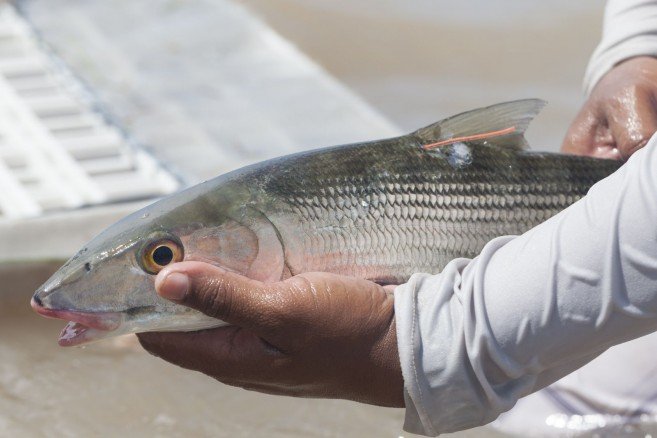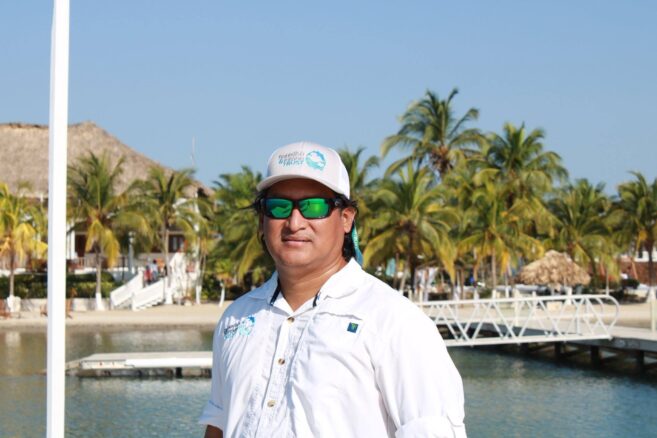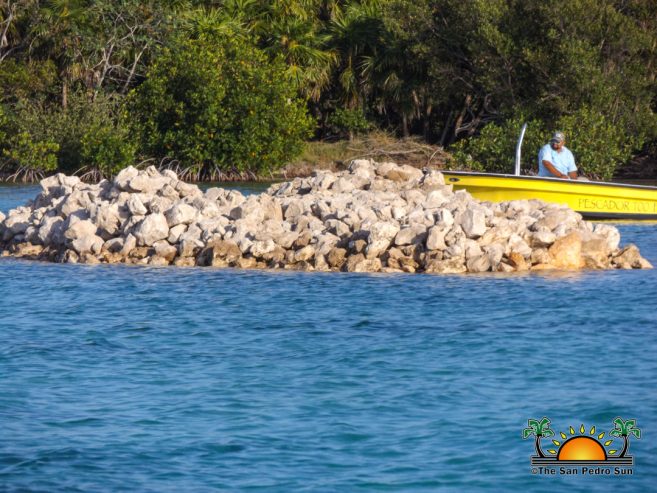The pristine Caribbean waters around Ambergris Caye house a series of unique marine habitats supporting livelihoods in fisheries and tourism. One of these sectors, particularly in tourism, is the fly-fishing industry. The survival of this livelihood depends on healthy and intact habitats for marine life such as tarpon, bonefish, and permit, which continue to be threatened by coastal development. A recent short film titled ‘Paradise Under Threat’ by the Bonefish and Tarpon Trust (BTT) highlights some of the challenges to conservation and the best approaches authorities can engage in to save these natural habitats.
The recent observation presented in the short documentary by BTT is produced by Silverline Films and sponsored by Blue Bonefish Lodge. The film indicates that communities will be unable to tackle conservation goals and sustain their economies and livelihoods if the loss of coastal habitats continues via proposed tourism projects such as Cayo Rosario and even Blackadore Caye. The proposed development on the ten-acre mangrove island of Cayo Rosario sits within the Hol Chan Marine Reserve and calls for over-the-water structures. Local environmentalists, biologists, tourism stakeholders, and fly-fishing guides say such structures threaten the fishing flats where this multi-million-dollar industry thrives. The areas around Cayo Rosario off Ambergris Caye’s northwestern coast are critical natural habitats for tarpon and permit. This group of concerned citizens continues appealing to the government for better conservation laws to save the fishing flats and thousands of livelihoods at the same time. The project at Cayo Rosario, promoted as ‘Six Senses Belize,’ is set to open in mid-2025.
The Blackadore Caye development is another expansive tourism project off Ambergris Caye’s northwestern coast. This Caye, owned by Hollywood and Oscar-winning actor and producer Leonardo DiCaprio, also faced resistance from local environmentalists and sport fishers when it was revealed that they had plans to build over-the-water structures within sensitive protected areas. After consultations, the plans for over-the-water structures were dashed. However, following their Environmental Impact Assessment (EIA) approval in March 2016, no further details of the mega-project have emerged.

Belize-Mexico Program Coordinator for BTT Addiel Perez shared with The San Pedro Sun that there are several threats to the local marine environment in the country. The major ones threaten the habitats of bonefish, tarpon, and permit. “There are several dredging projects. Some of those engaged in building over-the-water structures like docks and bungalows posing a major threat to these protected sites,” said Perez. With these areas disrupted, these fish could disappear, significantly affecting the livelihoods of thousands of fly-fishing guides. Perez noted that another threat to this fish species is the lack of economic and human resources to manage other fisheries properly. He referred to the beach trap users, who do not check these regularly posing a danger to the fish. Perez said they had received reports of bonefish, tarpons, and even permit dying in these traps. “One of the ways we can reduce that is to engage them in conservation projects,” said Perez. He added that government should continue monitoring the current protected areas. If they want to attract foreign investment to create more jobs, they should follow science to form a strategic approach to conservation and education.

Well-known San Pedrano and professional sports fishing guide Omar Arceo has strongly advocated for preservation. Arceo said that such coastal development promotes the investment of millions of dollars and the creation of jobs for Belizeans. “But the jobs they will create will not benefit the community, but the mainland where they will go and get the construction material from,” said Arceo. “Definitely, it will not benefit fly-fishers, restaurants, or vendors in the community.” He further explained what was happening in Cayo Rosario. According to Arceo, Cayo Rosario has a different geographical formation surrounded by a saline lagoon. He reports that developers are taking sand from the shoreline and filling the area of the Caye where this lagoon is. This affects the seabed seagrass, which are the recovery flats for tarpon, bonefish, and permit.
These environmentalists and stakeholders are not against development but believe there needs to be a balance for everybody to win. Sustainable development is the way to go, respecting nature and co-existing with its resources. Through membership and donations, the BTT team continues supporting research and conservation projects. One of the projects currently involves tagging permit fish to protect this endangered species better. According to BTT, throughout a three-year study, they have noticed that populations such as bonefish and other fisheries have recovered compared to a decade ago. This good health in fisheries can only be maintained if suitable habitats and sound practices are utilized when handling these fish species.
BTT, a science-based non-profit organization in Florida, USA, has researched the Caribbean for nearly 20 years. Their science-based insights on the biology and ecology of flats fishing have expanded to the Bahamas, Mexico, Belize, Cuba, and Puerto Rico. Hence, there is a local and regional focus. BTT’s mission is to protect and enhance critical flats habitats, reverse the decline of flats species, and use research findings to influence policy, educate the fishing community and improve resource management for long-term stewardship.
A BIG thank you goes out to the Blue Bonefish Lodge in San Pedro Town, Ambergris, Perez, and BTT’s Director of Marketing and Communication Nick Roberts and Silverline Films to raise awareness on the challenges threatening fishing flats in coastal communities.

